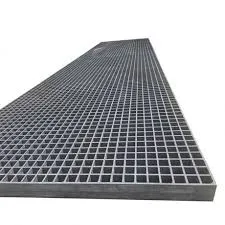
-
 Afrikaans
Afrikaans -
 Albanian
Albanian -
 Amharic
Amharic -
 Arabic
Arabic -
 Armenian
Armenian -
 Azerbaijani
Azerbaijani -
 Basque
Basque -
 Belarusian
Belarusian -
 Bengali
Bengali -
 Bosnian
Bosnian -
 Bulgarian
Bulgarian -
 Catalan
Catalan -
 Cebuano
Cebuano -
 China
China -
 China (Taiwan)
China (Taiwan) -
 Corsican
Corsican -
 Croatian
Croatian -
 Czech
Czech -
 Danish
Danish -
 Dutch
Dutch -
 English
English -
 Esperanto
Esperanto -
 Estonian
Estonian -
 Finnish
Finnish -
 French
French -
 Frisian
Frisian -
 Galician
Galician -
 Georgian
Georgian -
 German
German -
 Greek
Greek -
 Gujarati
Gujarati -
 Haitian Creole
Haitian Creole -
 hausa
hausa -
 hawaiian
hawaiian -
 Hebrew
Hebrew -
 Hindi
Hindi -
 Miao
Miao -
 Hungarian
Hungarian -
 Icelandic
Icelandic -
 igbo
igbo -
 Indonesian
Indonesian -
 irish
irish -
 Italian
Italian -
 Japanese
Japanese -
 Javanese
Javanese -
 Kannada
Kannada -
 kazakh
kazakh -
 Khmer
Khmer -
 Rwandese
Rwandese -
 Korean
Korean -
 Kurdish
Kurdish -
 Kyrgyz
Kyrgyz -
 Lao
Lao -
 Latin
Latin -
 Latvian
Latvian -
 Lithuanian
Lithuanian -
 Luxembourgish
Luxembourgish -
 Macedonian
Macedonian -
 Malgashi
Malgashi -
 Malay
Malay -
 Malayalam
Malayalam -
 Maltese
Maltese -
 Maori
Maori -
 Marathi
Marathi -
 Mongolian
Mongolian -
 Myanmar
Myanmar -
 Nepali
Nepali -
 Norwegian
Norwegian -
 Norwegian
Norwegian -
 Occitan
Occitan -
 Pashto
Pashto -
 Persian
Persian -
 Polish
Polish -
 Portuguese
Portuguese -
 Punjabi
Punjabi -
 Romanian
Romanian -
 Russian
Russian -
 Samoan
Samoan -
 Scottish Gaelic
Scottish Gaelic -
 Serbian
Serbian -
 Sesotho
Sesotho -
 Shona
Shona -
 Sindhi
Sindhi -
 Sinhala
Sinhala -
 Slovak
Slovak -
 Slovenian
Slovenian -
 Somali
Somali -
 Spanish
Spanish -
 Sundanese
Sundanese -
 Swahili
Swahili -
 Swedish
Swedish -
 Tagalog
Tagalog -
 Tajik
Tajik -
 Tamil
Tamil -
 Tatar
Tatar -
 Telugu
Telugu -
 Thai
Thai -
 Turkish
Turkish -
 Turkmen
Turkmen -
 Ukrainian
Ukrainian -
 Urdu
Urdu -
 Uighur
Uighur -
 Uzbek
Uzbek -
 Vietnamese
Vietnamese -
 Welsh
Welsh -
 Bantu
Bantu -
 Yiddish
Yiddish -
 Yoruba
Yoruba -
 Zulu
Zulu
fiberglass launder
Understanding Fiberglass Launder A Comprehensive Overview
In the realm of industrial applications, fiberglass materials have emerged as a game-changer owing to their versatility, strength, and resistance to corrosion. Among the many uses of fiberglass, the creation of fiberglass launders stands out, especially within the water treatment, chemical, and mining industries. A launder, in this specific context, refers to a channel or trough designed to transport liquids or slurries. This article explores the properties, benefits, and applications of fiberglass launders in various industrial sectors.
What is a Fiberglass Launder?
Fiberglass launders are constructed from glass-reinforced plastic, commonly known as fiberglass. The manufacturing process involves combining fiberglass strands with a resin matrix, resulting in a lightweight yet robust material. These launders are designed to handle a wide range of fluids, including wastewater, chemicals, and slurries, making them essential components in treatment systems.
Key Properties of Fiberglass Launders
1. Corrosion Resistance One of the most significant advantages of fiberglass launders is their superior resistance to corrosive chemicals. In environments where liquids containing acids, alkalis, or salts are prevalent, traditional materials like metal or wood may deteriorate. Fiberglass offers a long-lasting solution, ensuring that maintenance costs and system failures are minimized.
2. Lightweight Compared to other materials such as concrete or metal, fiberglass is considerably lighter. This feature simplifies handling and installation processes, reducing labor costs and the need for heavy machinery. The lightweight nature also eases transportation to remote sites.
3. Durability Fiberglass launders have excellent impact resistance and can withstand the rigors associated with industrial environments. They maintain structural integrity over long periods, even when exposed to varying temperatures and harsh weather conditions.
fiberglass launder

4. Customizability Another attractive aspect of fiberglass launders is their ability to be molded into different shapes and sizes. This flexibility allows engineers to design launders that fit specific applications and space constraints while ensuring optimal fluid flow.
Applications of Fiberglass Launders
1. Water Treatment Facilities In municipal and industrial water treatment plants, fiberglass launders are used to transport treated water during filtration and sedimentation processes. Their corrosion resistance ensures longevity and reliability, which is critical for maintaining consistent water quality.
2. Chemical Processing In chemical manufacturing, fiberglass launders excel in transferring highly reactive or corrosive substances. Their ability to withstand harsh chemicals without degradation is paramount for safety and efficiency in processing operations.
3. Mining and Metallurgy Fiberglass launders are also utilized in the mining industry, where they play a crucial role in transporting slurries resulting from ore processing. Their strength and resistance to wear make them ideal for handling abrasive materials.
4. Food and Beverage Industry The food and beverage sector employs fiberglass launders in various applications, including waste discharge and material handling. Their non-porous nature makes them easy to clean, thereby adhering to hygiene standards critical in food processing.
Conclusion
Fiberglass launders are a vital component in many industrial applications due to their unique properties and versatility. Their corrosion resistance, lightweight design, and durability provide significant advantages over traditional materials, making them a preferred choice in various sectors. As industries continue to evolve and require more efficient and reliable methods of transporting liquids and slurries, the demand for fiberglass launders is expected to grow, solidifying their role in modern industrial processes. With ongoing material advancements and innovations, fiberglass launders will undoubtedly remain at the forefront of industrial fluid management solutions.









